What's inside
Can you eat 1000 calories in a single meal?
In most cases, people who need very high caloric intakes tend to be athletes or people that often work out.
The trouble is that reaching this amount in one sitting might be challenging.
Eating too much can make one sluggish, cause bloating, and cause other symptoms that impact athletic performance.
As a Registered Dietitian, I advise my clients on simple ways to reach this caloric goal. However, I show them how to do it without feeling too stuffed during the day or getting nasty gastric problems.
In this article, I will provide you with 11 simple 1000 calorie meals. It’s created especially for those of you looking to increase muscle growth, improve your performance, or just manage to reach your daily caloric intake.
You can use our free advanced calorie and macronutrient calculator to dial in your nutrition and get accurate results on your daily food requirements to maximize muscle growth or shred fat like a pro.
Keep reading to find out if you should eat these types of meals, foods to focus on, and more.
Who should be eating 1000-calorie meals?
Related: Best 4 Week Muscle Gain Workout Plan With PDF

Before we talk about how to eat 1000 kcal in one meal, it’s important to understand who needs to have this amount of calories.
There are different scenarios where someone might need to include a 1000 calorie meal. It all comes down to your energy requirements and the frequency of your meals.
Let’s talk about the first one: energy requirements.
People like bodybuilders, athletes, or regular gym fans looking to add some muscle tend to have huge energy requirements.
Related: 12-Week Powerbuilding Program
For example, an average male must consume around 2000 to 2500 kcal per day to maintain weight.
In a weight gain phase, a bodybuilder might need to consume 3000 to 3500 kcal per day.
Another reason you might need to consume 1000 kcal per meal is due to your meal time frequency.
On average, people consume 4-5 meals per day. However, this is not obligatory, meaning people can choose to have fewer meals throughout the day.
For instance, busy people might not have enough time to eat 4-5 times daily.
Another scenario would be people that practice intermittent fasting. When people practice intermittent fasting, they have a shorter eating window. For example, if you do an 18-hour fast, you have an eating window of 6 hours.
Since your eating window is shorter, you might do only 2-3 meals daily.
If we use the energy requirements of the bodybuilder we mentioned before, consuming 3,000 kcal per day at three meals would mean consuming 1000 kcal per meal.
Ultimately, it comes down to how many calories you need for your goals and how many meal times you need to make.
If you need to consume 1600 kcal daily and make 4-5 meals daily, it doesn’t make sense to consume 1000 kcal per plate.
What do 1000-calorie meals look like?
Related: 600 Calories A Day
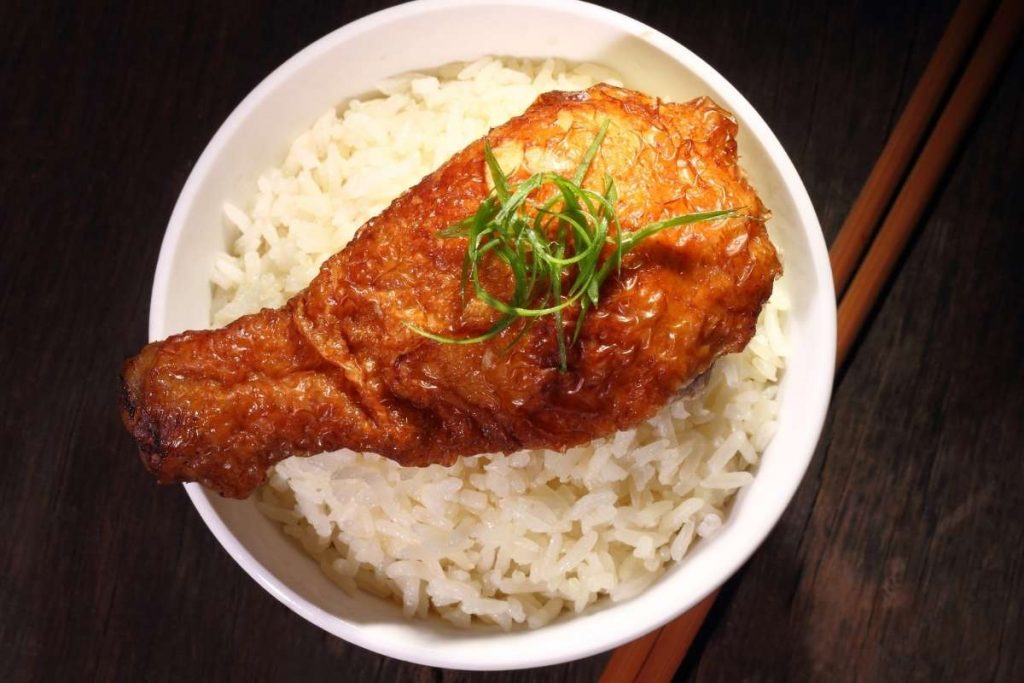
Talking about consuming 1000 kcal per meal sounds like a lot. But exactly what does it look like?
To get an idea of what a 1000-calorie meal looks like, we need to visualize an average meal.
An average breakfast, lunch, or dinner might be around 400 to 500 kcal per meal. This depends on your goals, weight, age, height, and activity levels, but that is a rough estimate of what I normally see during my consultations.
Eating one cup of rice (169 kcal), one chicken drumstick (155 kcal), one cup of green salad (6 kcal), and one tablespoon of dressing (64 kcal) bring you to a total of 394 kcal.
As you can see, striving for that 1000 kcal per meal might be challenging.
To convert that meal into a 1000 kcal meal, it would mean adding one tablespoon of olive oil (119 kcal), one extra chicken drumstick (155 kcal), and one avocado (322 kcal).
This would bump you up to a total of 990 kcal per meal.
The macro distribution can help you achieve those calories. Generally, you can have the following macro distribution: 40-55% carbs, 20-30% protein, and 25-35% fats.
Fats are one of the best ways to help you add calories since they are very energy-dense. I’ll share more on that later in the article.
11 Simple 1000 Calorie Meals to Include in Your Diet Plan
Related: 10 Simple Tricks To Eating Less Food
Avocado Toast
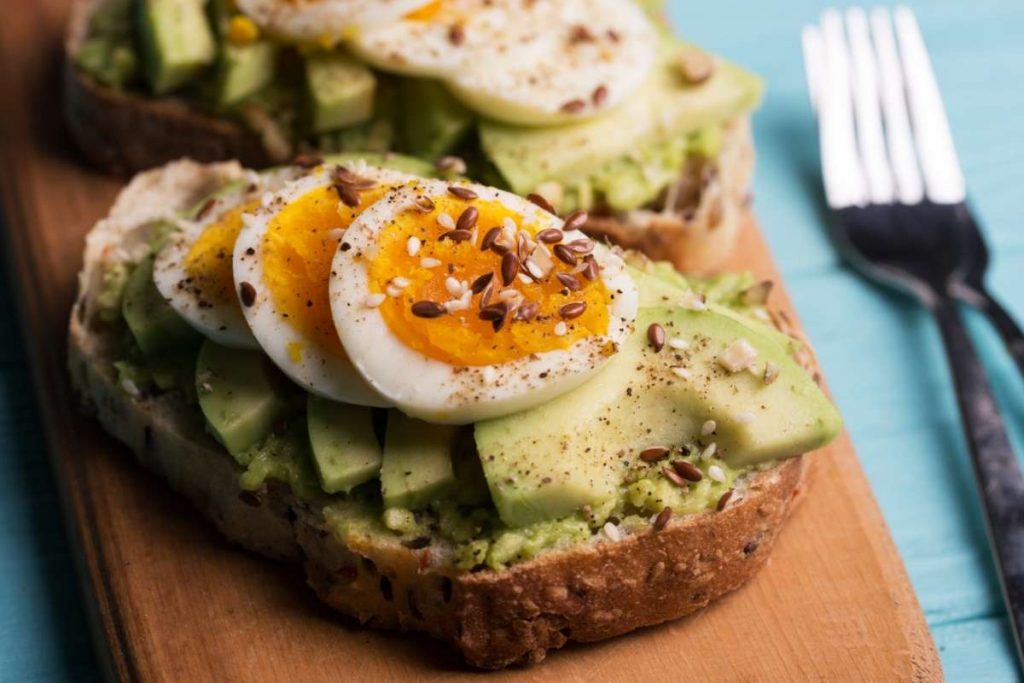
Everybody loves avocado toast. One of the benefits of making avocado toast is that you can modify the calories according to your goals.
For example, add more high-fat protein like salmon, sesame seeds, olive oil, or even cheese if you need to add calories.
You can even make a sweet version by adding some strawberries or strawberry jam. I know it sounds weird, but it somehow works!
Ingredients
- 3 slices of whole wheat bread: 245 kcal
- 4 eggs: 288 kcal
- 1 avocado: 322 kcal
- 1 tablespoon of olive oil: 119 kcal
- 1 tablespoon sesame seeds: 52 kcal
Total Calories: 1026 kcal
Breakfast Sandwich
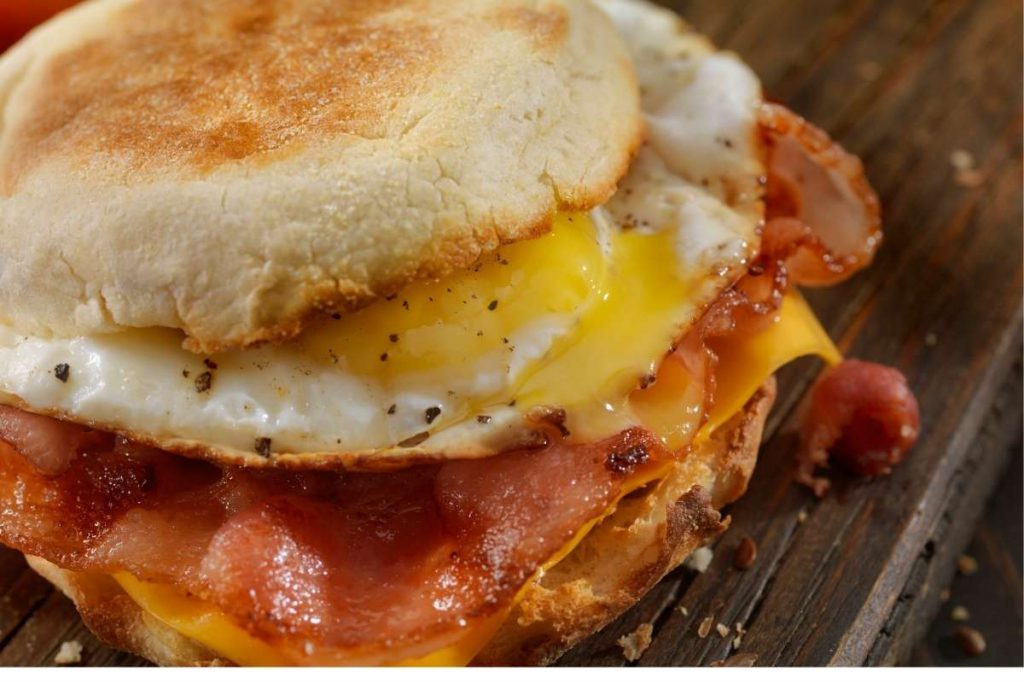
A breakfast sandwich is an easy way to increase your calories while eating on the go.
One of the benefits of breakfast sandwiches is that you can always include the ingredients of your choice.
Here’s my favorite version of it using English muffins, eggs, cheese, and bacon.
If you are still short on calories, add a bowl of fruit on the side or a cup of orange juice.
Ingredients
- 2 English muffins: 134 kcal
- 4 eggs: 288 kcal
- 1 tablespoon of olive oil: 119 kcal (for cooking)
- 6 slices of bacon: 190 kcal
- 3 slices swiss cheese: 258 kcal
- One cup of orange juice: 92 kcal
Total Calories: 1081 kcal
Oatmeal Bowl
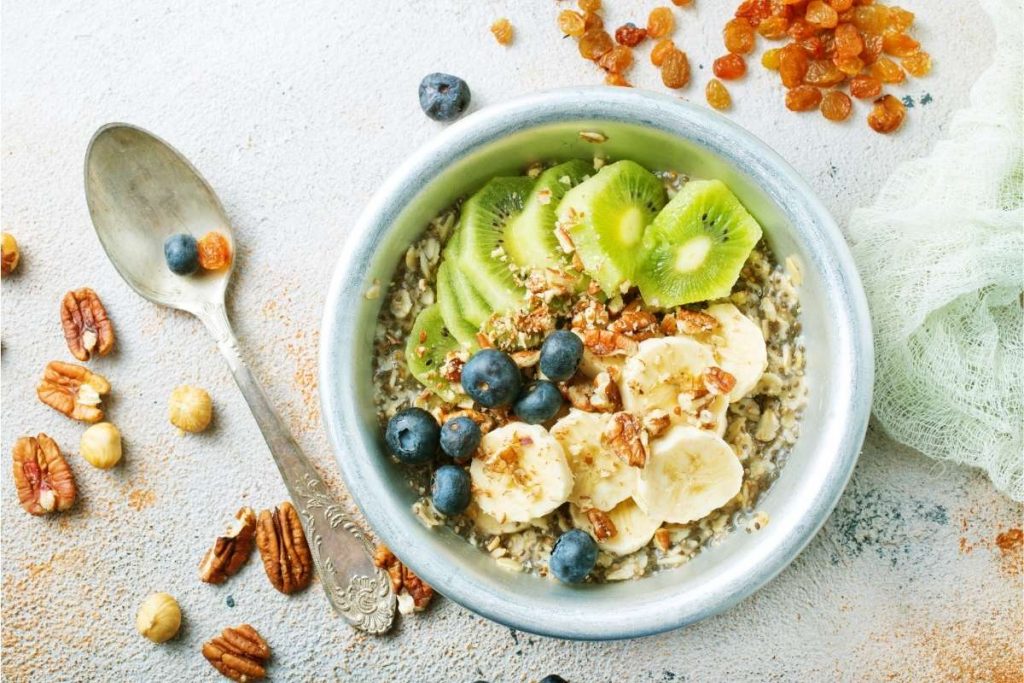
You can create a sweet or savory meal using oatmeal. However, I prefer to make a nice bowl of warm oatmeal with fruit on top and nuts.
You can switch up the fruits in the bowl or add more if you need the extra calories.
Oatmeal has the advantage that it is high in fiber, so it will help you lower your cholesterol levels and fight constipation.
Ingredients
- 1 cup raw oatmeal: 307 kcal
- 1 cup of 2% milk: 122 kcal
- 1 kiwi: 44 kcal
- 1 small banana: 90 kcal
- 1 oz pecans: 196 kcal
- 2 tablespoons honey: 128 kcal
- 1 scoop vanilla whey protein: 110 kcal
Total Calories: 997 kcal
Pasta Bowl
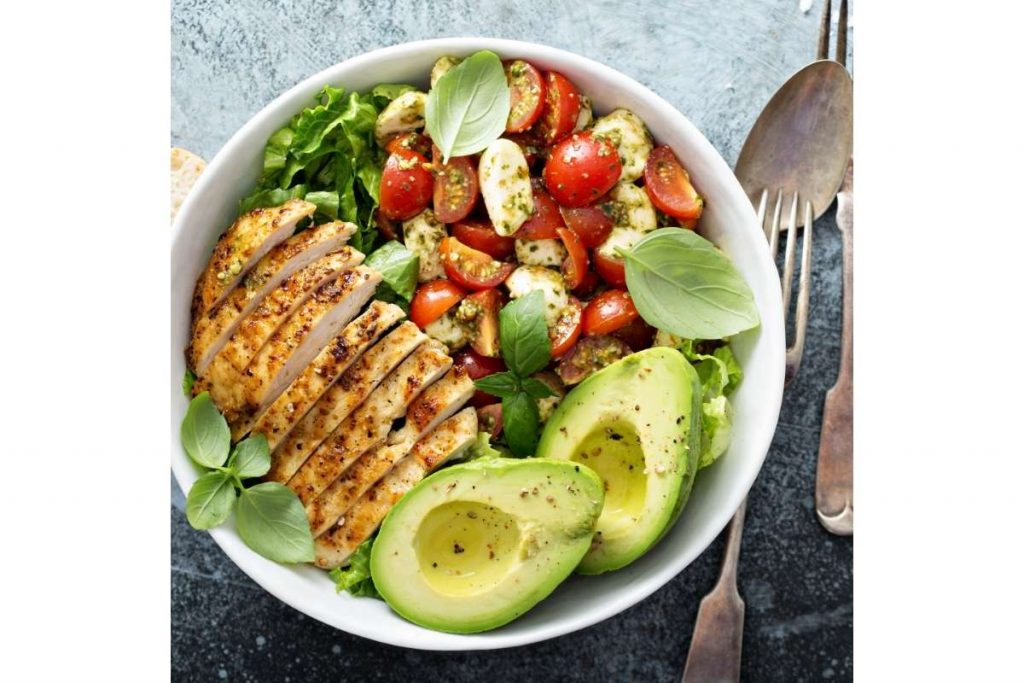
One of my favorite dishes to make are bowls. They are versatile and allow you to add different ingredients based on how many calories you need to consume.
For example, if you’re on a weight gain journey, you can add pasta, rice, quinoa, and chickpeas as your base.
However, if you are on a weight loss journey, you can replace it with cauliflower rice or zucchini noodles.
The possibilities are endless when it comes to bowls.
Remember when you are creating a bowl, always make sure to have a lot of protein (chicken, fish, seafood, meat), a healthy fat (avocado, nuts, seeds, olive oil), a carb (pasta, quinoa, rice), and vegetables.
This way, you ensure you’re getting enough nutrients for the meal.
In this case, a pasta bowl can give you all the macros you need in just one sitting.
Ingredients
- 2 cups of pasta penne: 336 kcal
- 4 oz chicken: 136 kcal
- 1 avocado: 322 kcal
- ½ cup cherry tomatoes: 23 kcal
- 1 oz whole milk mozzarella cheese: 85 kcal
- 1 tablespoon olive oil: 119 kcal
Total Calories: 1021 kcal
Tuna Salad Wrap
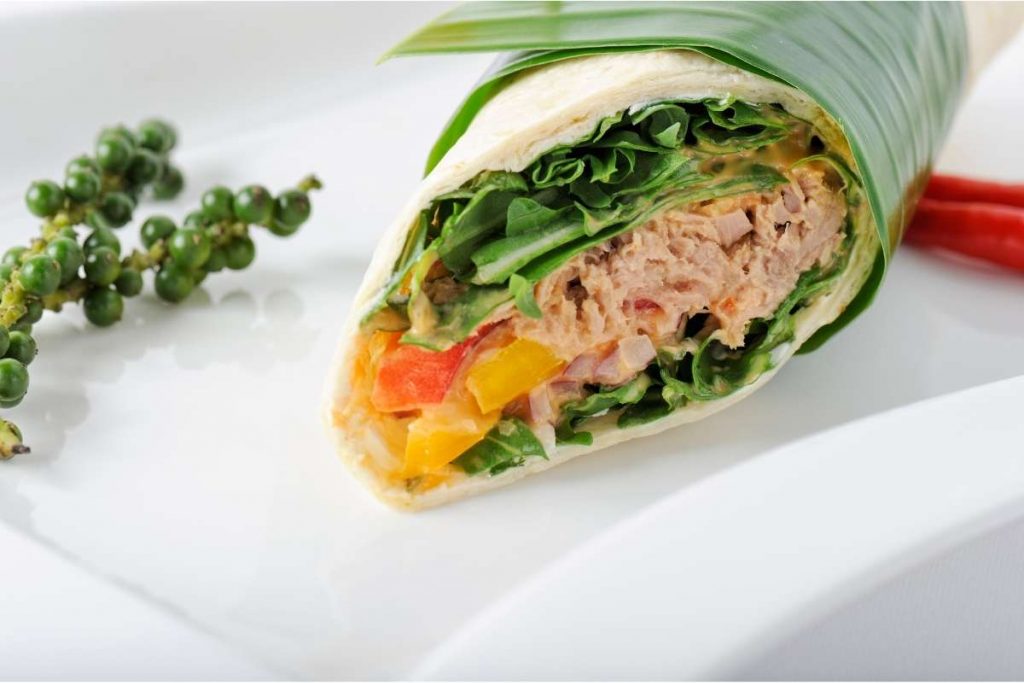
A tuna salad wrap is an easy 1000 calorie meal that you should learn to make on your own.
While you can buy a tuna wrap anywhere, my advice is always to make it yourself. This way, you know that the nutritional content is accurate and appropriate for your goals.
If you don’t like tuna, you can always exchange it for chicken to get a different protein.
Make sure to have a side salad to increase the nutrient intake of your meal. You might avoid having too many vegetables because they are low in calories and high in fiber. While filling, you still need the nutrition.
Ingredients
- 1 tortilla wrap: 120 kcal
- 6 oz tuna in water: 218 kcal
- 2 tablespoon mayonnaise: 300 kcal
- ½ avocado: 161 kcal
- 1 cup of green salad: 6 kcal
- 2 tablespoons of dressing: 128 kcal
- 1 oz chips: 151 kcal
Total Calories: 1084 kcal
Poke Bowl
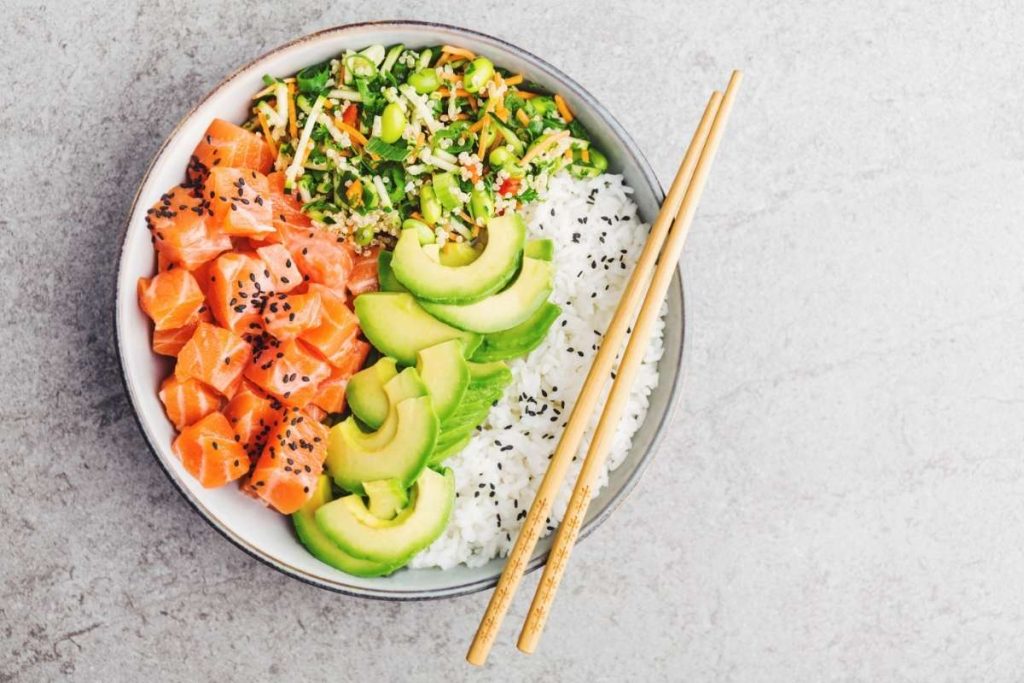
Like pasta bowls, poke bowls allow you to add different ingredients and adjust them to any cuisine of your liking.
My favorite is to have a salmon poke bowl.
Salmon has the advantage of being high in healthy fats, which means it has many calories compared to other foods like chicken breast.
Additionally, salmon is very high in omega-3 fatty acids, which helps reduce inflammation in the body.
Ingredients
- 2 cups rice: 338 kcal
- 6 oz salmon: 216 kcal
- ½ avocado: 161 kcal
- 1 tablespoon of sesame seed oil: 130 kcal
- 1 tablespoon sesame seeds: 52 kcal
- ½ cup carrots: 22 kcal
- 1 cup mango: 99 kcal
Total Calories: 1018 kcal
Pasta Bolognese With Garlic Bread

If you’re carb loading, pasta is a great way to accomplish that.
However, make sure you have some protein on your dish. One of the most common mistakes is only having a bowl of pasta without any protein (ground beef, salmon, seafood, or cheese).
Protein plays a crucial role in muscle building. Thus, it’s always important to have some protein source in every meal.
If you’re still missing calories, you can have a side of garlic bread to increase calories.
Ingredients
- 2 cups spaghetti: 390 kcal
- 2 tablespoons of butter: 204 kcal
- 4 oz of ground beef: 224 kcal
- 1 tablespoon of olive oil: 119 kcal
- 1 cup of tomato sauce: 78 kcal
Total Calories: 1015 kcal
Pork Chops With Mashed Potatoes
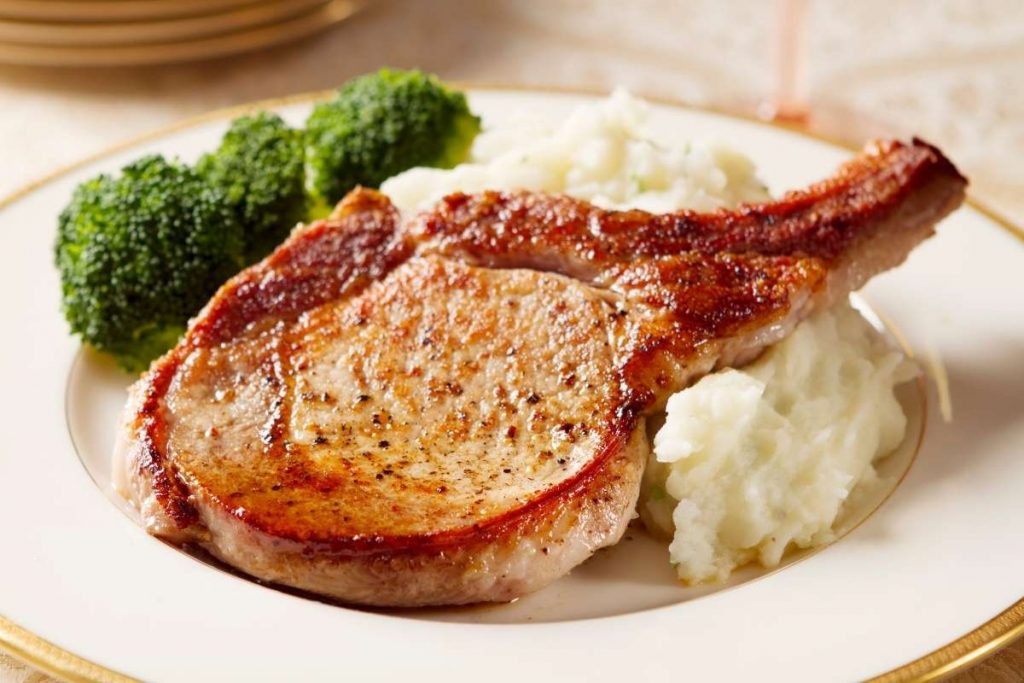
The pork chop is a protein that’s very high in calories due to its higher fat content compared to a leaner option like chicken breast. This helps you increase your calories without noticing it.
Adding some mashed potatoes on the side can also benefit you by adding calories since you can make it with butter and cream to add calories you won’t notice.
Make sure to add a source of vegetables to balance everything out. Broccoli is ideal for boosting your vitamin C intake and immune function.
Ingredients
- 4 oz pork chop: 175 kcal
- 2 large potatoes: 290 kcal
- 2 tablespoons butter: 204 kcal
- 1 tablespoon olive oil: 119 kcal
- ¼ cup heavy cream: 202 kcal
- 1 cup broccoli: 31 kcal
Total Calories: 1021 kcal
Homemade Burger
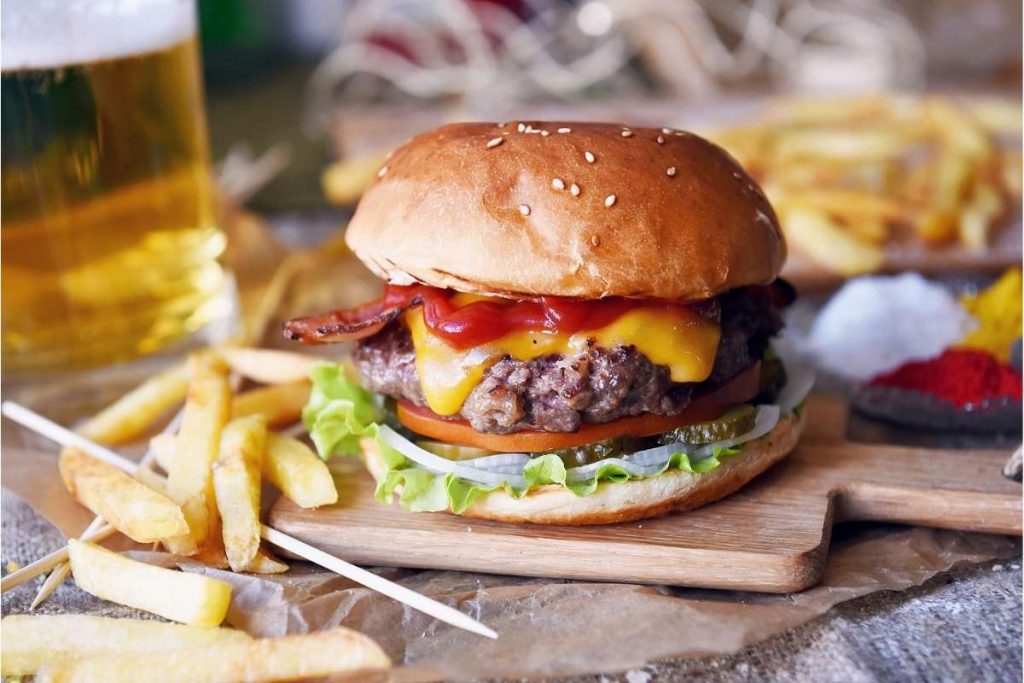
When thinking of high-calorie foods, the first thing that comes to your mind is fast food. More specifically, burgers. Right?
While fast food tends to be high in calories and can help you achieve 1,000 kcal in one meal, it doesn’t offer high-quality food that will provide nutrients for your body.
If you make your burger at home, you can get good quality products that can help you reach that 1000 kcal in a healthier way.
Ingredients
- 1 hamburger bun: 145 kcal
- 4 oz ground beef: 224 kcal
- 1 tablespoon olive oil: 119 kcal
- 1 slice of cheddar cheese: 115 kcal
- 2 tablespoons mayo: 200 kcal
- 1 tablespoon ketchup: 17 kcal
- 2 cups of french fried on the side: 236 kcal
Total Calories: 1056 kcal
Protein Smoothie
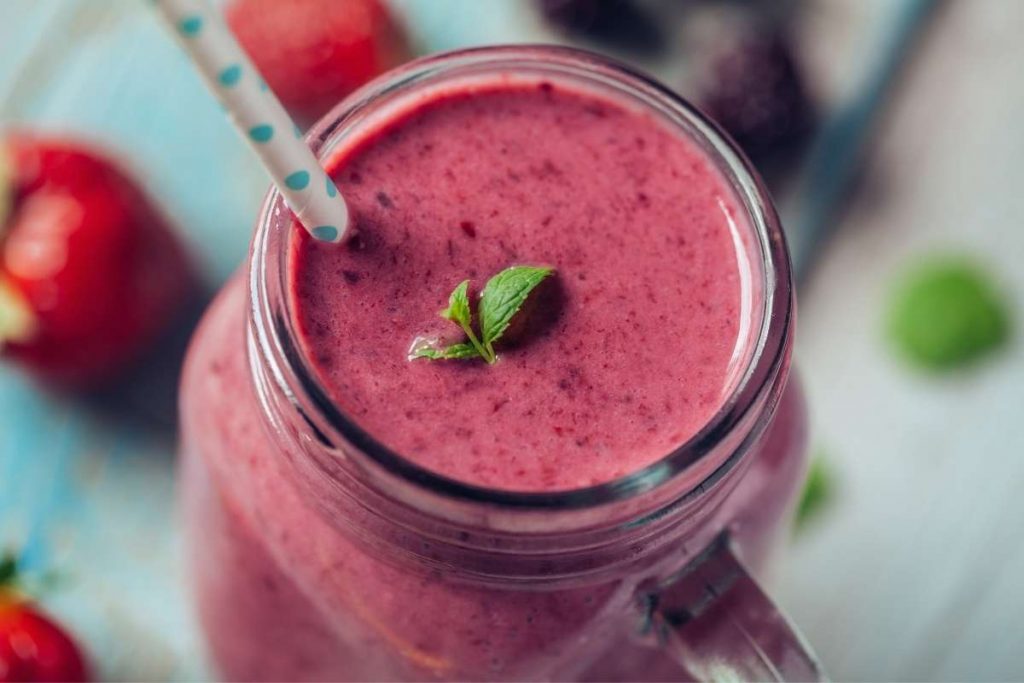
Making breakfast, lunch, or dinner with 1,000 kcal might be easier. Still, consider creating high-calorie snacks if you come up short.
A protein shake lets you drink those calories without adding too much bulk to your stomach.
When I’m in a muscle gain phase, I have difficulty reaching my caloric intake. This is when I make smoothies to allow me to get my caloric intake more smoothly.
It won’t make you feel too full, so you can still perform your best during that training session.
Ingredients
- 1 cup 2% milk: 122 kcal
- 1 cup rolled oats: 307 kcal
- 1 scoop protein shake: 110 kcal
- 1 cup blueberries: 86 kcal
- 1 small banana: 90 kcal
- 2 tablespoons peanut butter: 192 kcal
- 2 tablespoons honey: 128 kcal
Total Calories: 1035 kcal
Chia Pudding

Finally, a chia pudding is a handy way to have a high-calorie snack that can eliminate those sweet cravings.
One of the advantages of chia puddings is that you can make them one night before and have them ready to eat the next day.
While the chia pudding is not very high in calories, the toppings you use can help you achieve your calorie goals.
Ingredients
- ½ cup chia seeds: 448 kcal
- 1 cup 2% milk: 122 kcal
- 1 tablespoon honey: 64 kcal
- 1 oz pecans: 196 kcal
- 1 small banana: 90 kcal
- ¼ cup granola: 149 kcal
You can add the spices of your liking, like cinnamon, vanilla, or pumpkin spice. They won’t represent a significant caloric intake.
Total Calories: 1069 kcal
Foods That Can Help You Increase Your Calorie Intake Per Meal
Related: Find Your Perfect Balance With Our 1400 Calorie Meal Plan
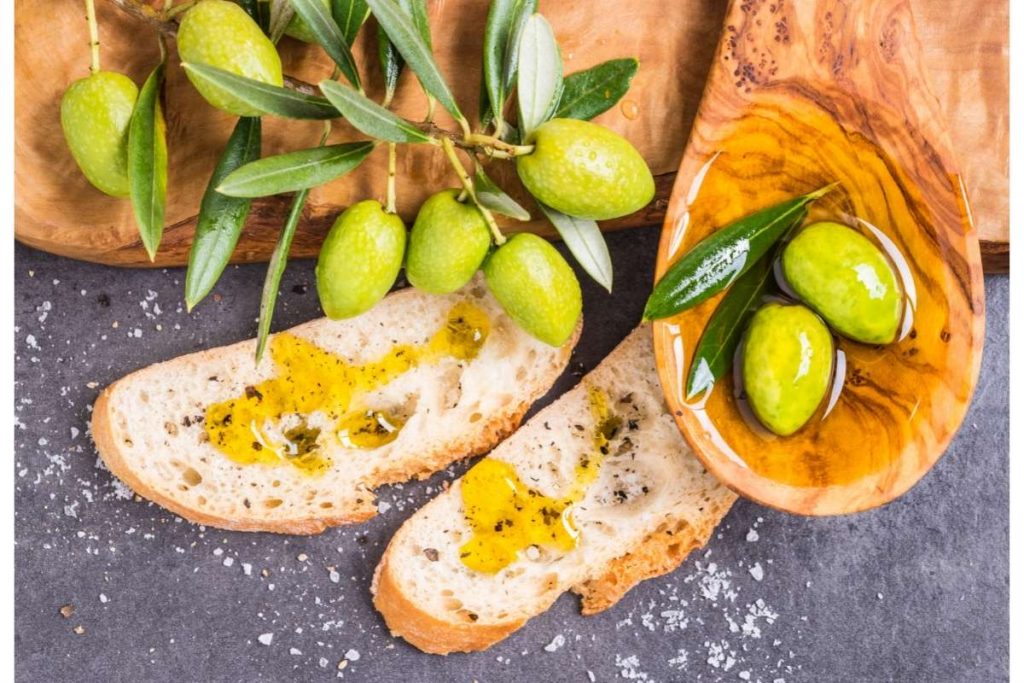
Including high-energy-dense foods can help you achieve those 1000 kcal per meal.
But, what exactly is an energy-dense food?
They are foods with high calories found in smaller amounts. This means you don’t have to eat tons of it to get the calories you want.
For example, vegetables are low energy dense.
One cup of broccoli has 30 kcal, while a fat like chia seeds has more than 800 kcal per cup.
Olive Oil
Olive oil is an excellent choice since it is high in healthy fats. However, other choices like avocado oil, sesame seed oil, avocado oil, flaxseed oil, and coconut oil are also great options.
You can saute your meals in oils or add them on top of your vegetables for extra flavor.
Avocado
Avocados are not only high in calories but are also high in fiber. It is one of my favorite ways to increase your calorie intake.
Add some avocado to your favorite dishes. Whether in cubes or smashed, it can help you achieve that high caloric intake.
Nuts
Nuts like cashews, peanuts, almonds, walnuts, and Brazil nuts are very high in calories. They are also high in selenium which helps boost your immune function.
Plus, they’re high in healthy fats that help protect your heart.
Seeds
Like nuts, seeds are another great option to increase your caloric content. Flaxseed, chia seeds, and hemp seeds are all high in calories and omega-3 fatty acids that help you reduce inflammation in your body.
Honey
Simple sugars like honey, sugar, and maple syrup are a handy way to increase caloric intake.
However, be careful of adding too much since it can create a sugar spike, leading to a lack of energy throughout the day.
When you include a simple carb (like honey), make sure you have it with a healthy fat, like almonds. This helps avoid spiking your glucose response.
Dark Chocolate
If you’re craving something sweet, dark chocolate is a good way to increase your calories in a meal. You can have it on top of any previous meals (like the oatmeal) or have it as a dessert after lunch or dinner.
Dark chocolate is high in antioxidants that help reduce inflammation in your body.
Salmon
High-fat meats like salmon, pork chops, chicken thighs, and sirloin steak are an excellent way to increase your calories without a lot of effort.
Replace a low-calorie protein like chicken breast for any of the above, and you can easily reach 1,000 kcal per meal.
Salmon has the advantage of being high in calories and omega-3 fatty acids, which help reduce inflammation in the body.
Conclusion
Having regular 1,000 calorie meals is not for everyone. If you’re at a normal activity level and aren’t trying to bulk up, you likely don’t need to consume that many calories in a sitting.
However, if you’re an athlete, are in a bulking phase, or are practicing intermittent fasting, you might consider bumping up the caloric content of each meal.
Even more challenging than avoiding fullness and bloating is getting enough nutrients. That’s why it’s key to incorporate lots of whole foods into your high-calorie meal.
Including high-calorie foods like avocado, nuts, seeds, honey, and olive oil can help. These help your body function optimally, unlike the unhealthy fats and additives found in high-calorie junk foods.
Why are you interested in eating 1,000 calories per meal? What are your favorite high-calorie recipes?
Let me know in the comments, and be sure to share this advice with someone who may need it.

